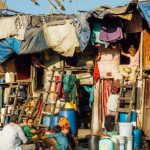 Weird Stuff
Weird Stuff  Weird Stuff
Weird Stuff  Our World
Our World 10 Ways Your Christmas Tree Is More Lit Than You Think
 Movies and TV
Movies and TV The 10 Coolest Stars to Set Sail on The Love Boat
 History
History 10 Things You Didn’t Know About the American National Anthem
 Technology
Technology Top 10 Everyday Tech Buzzwords That Hide a Darker Past
 Humans
Humans 10 Everyday Human Behaviors That Are Actually Survival Instincts
 Animals
Animals 10 Animals That Humiliated and Harmed Historical Leaders
 History
History 10 Most Influential Protests in Modern History
 Creepy
Creepy 10 More Representations of Death from Myth, Legend, and Folktale
 Technology
Technology 10 Scientific Breakthroughs of 2025 That’ll Change Everything
 Weird Stuff
Weird Stuff Ten Bizarre Facts About The Doge Meme
 Our World
Our World 10 Ways Your Christmas Tree Is More Lit Than You Think
 Movies and TV
Movies and TV The 10 Coolest Stars to Set Sail on The Love Boat
Who's Behind Listverse?

Jamie Frater
Head Editor
Jamie founded Listverse due to an insatiable desire to share fascinating, obscure, and bizarre facts. He has been a guest speaker on numerous national radio and television stations and is a five time published author.
More About Us History
History 10 Things You Didn’t Know About the American National Anthem
 Technology
Technology Top 10 Everyday Tech Buzzwords That Hide a Darker Past
 Humans
Humans 10 Everyday Human Behaviors That Are Actually Survival Instincts
 Animals
Animals 10 Animals That Humiliated and Harmed Historical Leaders
 History
History 10 Most Influential Protests in Modern History
 Creepy
Creepy 10 More Representations of Death from Myth, Legend, and Folktale
 Technology
Technology 10 Scientific Breakthroughs of 2025 That’ll Change Everything
10 Unsettling Teachings of the Eccentric Aleister Crowley
Regardless of anyone’s religious or spiritual beliefs, or lack thereof, Aleister Crowley is an incredibly fascinating figure. There’s as much myth and legend surrounding him as there are facts, and sifting through the stories is a strange, strange look into one of the most notorious lives of the 20th century. He left behind an incredibly rich history of teachings and beliefs, not to mention more than a few outrageous claims.
10 Claimed to Have Developed the “V for Victory” Sign

There was some pretty powerful symbolism going on in World War II, and according to Crowley, the Allied “V for Victory” sign was his creation. Since we know what happened at the end of the war, it goes without saying that he was right—if, that is, he did do what he claimed.
At the time, he was friends (or at least acquaintances) with real-life super-spy Ian Fleming. Just what kind of impact Crowley had in the war years is up for debate. Some claim that he was a spy and some saying that even going back to World War I, he was posing as a German supporter to drum up a significant amount of crazy to help sway the Americans to join the war on the side of the British.
Aleister also said that he had the ear of Winston Churchill, and when it came time to develop a symbol that would rally the Allied troops, he was the one that came up with the “V for Victory” salute. It was more than just an inspirational sign; it was also designed to strike fear in the hearts of Nazi occultists. The swastika, which gained its power from the Sun and solar energy, was a powerful thing; that’s why the Nazis chose it, after all. Crowley stated that the “V for Victory” sign was just as powerful in its opposition. Supposedly, it was a magical, mystical sign that invoked the power of Apophis and Typhon and channeled their destructive forces into fighting for those who wielded it.
9 Crowley and the Hermetic Order of the Golden Dawn
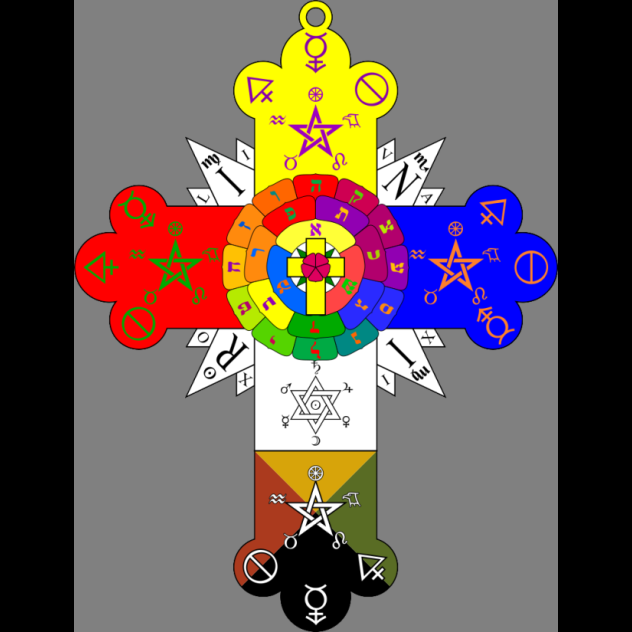
Once a major player in the Hermetic Order of the Golden Dawn, Crowley’s falling-out with the secret society within only a few years of his 1898 induction set a pretty good precedent for just how many different stories have been developed around him. According to Crowley, his disillusionment with the organization came when he realized that the people who were initiated didn’t necessarily know what they were dealing with when it came to mysticism, rites, and rituals. He stated that while the founder, S.L. MacGregor Mathers, did have some mystical powers, he had essentially bitten off more than he could chew and had started mucking about with evils over which he had no control. His actions had destroyed the Order, and Crowley left.
The Order tells a very, very different story. According to their official biography of Crowley, his rather over-the-top personality and sexual orientation were already causing problems when there was a falling-out between two opposing factions within the organization. Ultimately, Crowley didn’t actually leave the Order, not as he described, but finished off his alienation of the group by publishing some of their secret documents. To add insult to injury, he wasn’t just revealing secrets, but he was giving himself credit for works that Mathers had written. Crowley claimed to be doing it because Mathers was actually under the influence of evil that he couldn’t control.
Lawsuits soon followed, but since Mathers hadn’t copyrighted the works outside of the organization, Crowley won.
8Invisibility and the Lamp of Invisible Light
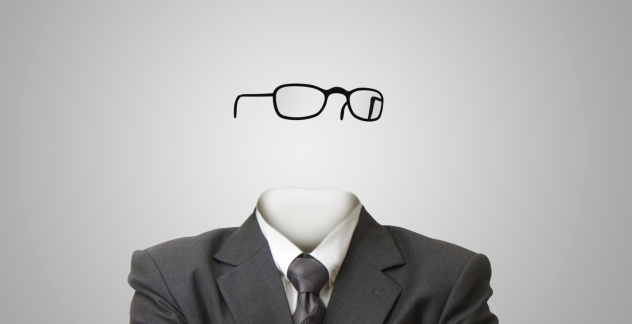
After his falling-out with the Hermetic Order of the Golden Dawn, Crowley fled first to Paris and then to the Americas. While in Mexico, he was absolutely inspired by what he found there and established his own order—The Lamp of the Invisible Light.
According to Crowley, his time in the Order of the Golden Dawn was just a warm-up. He likened his exodus from the Order to putting away “childish things” and went out to learn on his own. Once he was freed from the shackles of the already organized society, he did many things with inspiring names.
He learned to wield the “all encircling chain of the Great Brotherhood” and the “Sword of Flaming Light,” killing the serpent that had started the downfall of Christ while taming good and evil bulls, sowing dragon’s teeth, and acquiring the Golden Fleece. While he was writing his self-initiation ceremonies for his new order, he also discovered how to make himself invisible, which is apparently pretty easy once you know the tricks. Crowley says that it doesn’t have anything to do with truly making yourself invisible but just controlling everyone else around you and making them completely uninterested in making eye contact with you or noticing you in any way. He says that once he figured out how to do it, which he could gauge by the faintness of his own reflection, he could don his red robes and golden crown and walk the streets of Mexico, where no one would ever, ever make eye contact with him or initiate a conversation.
Clearly, this was because he was invisible.
7 Aiwass

Aiwass meant several different things over the course of the evolution of Crowley’s beliefs. In 1904, Crowley wrote The Book of Law, supposedly with guidance from the otherworldly Aiwass. At the time, Crowley painted him quite clearly as something that existed outside of himself rather than as a part of him. It was necessary, after all, as The Book of Law was designed to be a new religion that he had hoped would make all other religions obsolete. This religion, Thelema, was to be world-changing, and for that, it needed to come as a message from something outside the world. Aiwass was painted as the messenger, but as the doctrine developed, so did Aiwass’s role.
By 1929, Crowley had created a much more formulaic method for magic. By the time he wrote Magick in Theory and Practice, Aiwass had become something of a Satan-like figure that some interpret as a demonic guardian angel. Also, by this time, Crowley had elevated himself in the teachings; he was a prophet, identifying himself with his most infamous persona, The Beast, more and more.
Because there are few aspects of the occult that can’t be wound into each other, Crowley pointed to numerology as another indicator of Aiwass’s divine powers. Aiwass could be spelled a couple of different ways, he said, and as “Aiwas,” the angelic being was a 78. That number was important, too, as it was, according to Mathers and the Hermetic Order of the Golden Dawn, the number of Mezla. Mezla, in turn, was defined as a ray that would allow the otherworldly and the divine to appear to those chosen as messengers. This not only cemented Crowley’s relationship with the divine, but it suggested that he was relaying an incredibly important message that came from the incredibly important otherworldly being.
Aiwass is also identified as “the minister of Hoor-par-kraat,” who Crowley identified as the infant Horus. Typically depicted as sucking on his finger in a gesture of silence, the baby spoke through Aiwass to Crowley. According to Crowley, Aiwass appeared to him in Cairo at a time that his wife had specified during a trance-like state. He only had an hour to speak, and Crowley described him as a 30-something man, tall, dark, and giving off an aura of angelic strength and power despite his near-transparency.
6 Crowley’s Eucharist
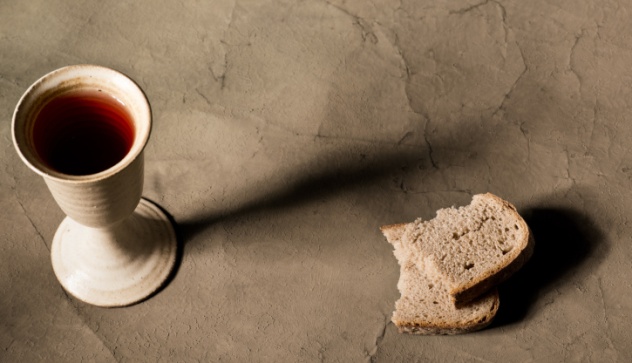
The Eucharist might be something that’s more familiarly associated with Christianity, but Crowley used it as one of his most secretive rituals, as well. For those that were deemed worthy, it was a pretty obvious ritual that was revealed in his writings, but if you weren’t worthy, you couldn’t see it and didn’t know. He gives some background to the rest of us, though, and says that it’s simply taking something ordinary, turning it into God, and consuming it.
So far, it’s along the lines of the Christian Eucharist. According to Crowley, though, to really get a good Eucharist going, you need to use things that were alive rather than dead; living things held the divine better.
There were a couple of different versions of the Eucharist. The two-element ritual used a wafer that he called the Cake of Light, and the wine, or cup, which should be filled with the blood of the person performing the ritual. (And it should be done every night at sunset, in case you’re taking notes.) The three-element Eucharist used elements for darkness (usually opium or nightshade), activity (strychnine), and calm (Cakes of Light). Four elements were literally items that stood for the four natural elements; things like incense, flames, wine, and salt were suggested. The Eucharist of five was based on the five senses, and the six was only for those in the highest levels, representing the Father, the Son, and the Holy Spirit, along with blood, water, and breath. And the Eucharist of seven is “mystically identical with that one.”
That One is what Crowley calls “the highest form of the Eucharist.” It consists of a single element that’s an absolute secret unless you’ve been determined worthy. He gives a few cryptic clues as to what the One is: It’s something that’s not alive or dead, not a solid or liquid, not cold or hot, and not male or female. Once you’re worthy of knowing what it is, he says, it’s pretty obvious. The One was likely sex.
Like the mortal body needs food to survive, the magical life needs the Eucharist to survive. Crowley considers it the most important of all rituals, as it’s the one that completes what he sees as a circle of magic, absorbing it into the body and creating in turn.
5 Jack Parsons and L. Ron Hubbard

In the 1940s, the United States was working on some rather groundbreaking projects, including the development of rockets. Jack Parsons (pictured above), a Cal Tech researcher, was in the middle of military projects that no one thought were really going to work. People were so skeptical that the group got the nickname “Suicide Club.” Whatever Parsons’s beliefs were outside the scientific world, he was a pretty brilliant researcher and ended up laying the groundwork for rocket technology and NASA’s Jet Propulsion Labs.
This was before he got involved with Aleister Crowley and L. Ron Hubbard. Crowley was well-established by this time, and Hubbard was little more than a small-time science fiction writer. Parsons neglected to keep his association with Crowley quiet. After an embarrassed U.S. government paid him to quietly go away, he continued correspondence with Crowley and became the head of his Ordo Templi Orientis in America. Parsons eventually hooked up with Hubbard, and Crowley was not pleased.
He called Hubbard a complete charlatan, even though Parsons swore that Hubbard was at the top of the list when it came to people dedicated to the Thelemic religion. Crowley thought Hubbard was a fraud and made his stance quite well-known. Parsons absolutely didn’t listen, though, and entered into a bizarre partnership with Hubbard. They were attempting to summon a woman whom Crowley called Babalon, the Scarlet Woman, the goddess of their Thelemic roots. It wasn’t long after Parsons, and Hubbard, acting as his scribe, performed the ritual that he met the redheaded Marjorie Cameron.
Clearly, he had succeeded. Parsons wrote to Crowley, ecstatic that he had managed to summon his redheaded goddess. Crowley was less impressed, writing to one of his associates, “Apparently Parsons or Hubbard or somebody is producing a Moonchild. I get fairly frantic when I contemplate the idiocy of these goats.” Crowley didn’t have to worry; the whole thing would fall apart with a bizarre con game where Hubbard convinced Parsons to front the cash for buying some yachts so Hubbard could reap the profits. One black magic ritual and a sudden, unexplained storm later, and the two parted ways.
4 Crowley on Yoga

Yoga is trendy today. All the cool moms have yoga pants and yoga mats in their cars, but they’re actually participating not in an exercise to make you more flexible, but in an exercise to unite everything we are with everything that the world is. That’s what Aleister says, at least.
According to Crowley, nothing really exists without other things. In his treatise on yoga, he gives the example of cheese: Cheese actually doesn’t have any qualities by itself because every person that tries it might see something different. But we don’t have those qualities in us, either, because, without the cheese, we are nothing. It’s only when we meet the cheese that magic happens, and yoga is a way of connecting our minds and subconscious with the world around us.
He goes on to say that every bit of us is yoga, for it’s only through yoga that we can truly experience anything. And for those who practice it regularly and in the right way, he says that four things will eventually happen. The first is perspiration, then a spasm in the body that causes all body muscles to go rigid. After that, he says there will be a third stage of “bhucari-siddhi,” a sort of weirdly defined phenomenon of “jumping about like a frog.” The fourth stage is complete levitation, and Crowley says that while he’s never seen it happen, people have told him that they’ve seen him levitating.
3 The Basics of Thelema
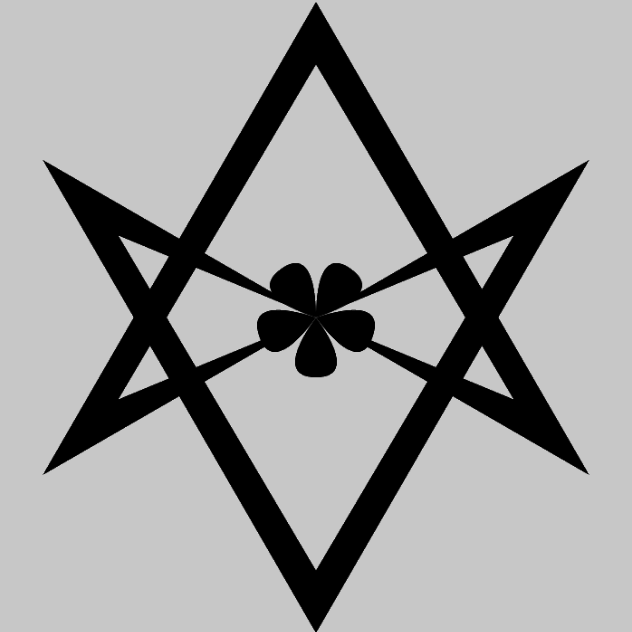
The concept had been around for a long time, but it was Aleister Crowley who created the blend of Western ideals and Eastern mysticism that became Thelema. Even though there’s a lot written on it, it’s sort of an odd philosophy, in that it can be applied in many different ways and interpreted differently by different individuals.
However, there are some basics that Crowley outlined: The most famous of these tenets is his infamous “Do what thou wilt shall be the whole of the Law” line. Even that’s up for interpretation. Some say that it clearly means that you can do whatever the heck you want to, and you’re still within the accepted guidelines of the philosophy. A somewhat alternative interpretation, though, brings ethics and morality back and says that it simply means that everyone has a divine purpose and nature inherent within them.
That’s why Crowley usually pairs “thelema,” meaning “will,” with the Greek agape, or “love.” It’s only through the act of love that people lose their sense of being alone and open the door to whatever it is they’re supposed to achieve on Earth. It’s also stated that there’s no such thing as original sin and that every man is a divine being. Also, true virtues aren’t the typical Christian virtues like modesty and charity but are instead things like courage and honor. Crowley also taught that it was all about balance. To truly embrace everything that is, there needs to be a balance within a person. There needs to be logic to balance a person’s emotion, wisdom to balance intelligence, and so on.
The Thelematic relationship with God is a pretty dangerous one for almost any other school of religion. According to Crowley, there are a couple of different stages of man’s relationship with God. First, they reject the idea of faith in God instead of standing beside God. It’s only then that a person will come to realize that they are God.
2 Eroto-Comatose Lucidity
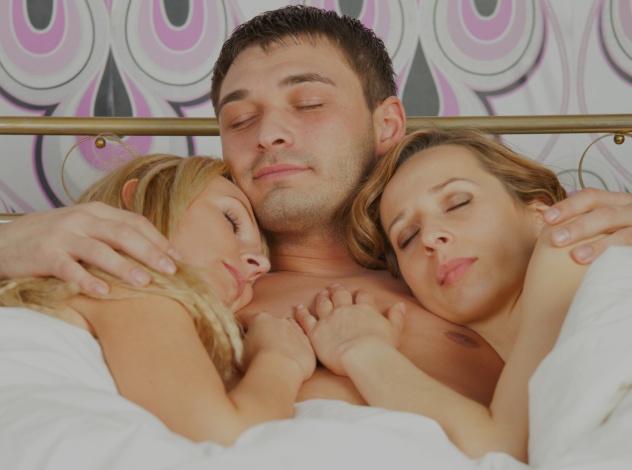
Anyone who knows even the most general basics about Crowley probably knows he’s associated with sex magic. His writings on the subject are incredibly in-depth and full of rituals and significance, and it’s officially called eroto-comatose lucidity. The basics are pretty straightforward. The person preparing to undergo the spiritual journey goes through some basic physical and athletic training and feasting. Then, during the ritual, it’s up to a couple of attendants (the more experienced, the better) to “exhaust him sexually by every known means.” The goal is to suspend the person somewhere between sleep and arousal. According to Crowley, it exhausts the body and exhilarates the spirit. When the person reaches a state where they’re not awake and not asleep—but are aware—their spirit is free to experience the most divine of other spirits.
These principles are supposedly ancient, and they’re likened to a sort of alchemy, where the energy in the body is transformed into the energy of the divine. Crowley’s term combines the erotic with a state of heightened awareness and unconsciousness. A lot of his focus was on the conservation of the sacred, the divine, and the energy stored not only in the human body but also in body fluids.
This, according to some texts, meant the consumption of those bodily fluids afterward. Some of Crowley’s writings suggest that he believed the connection with the divine continued even after the episode had finished, and he wrote of prophecies that he divined by his evaluation of what he called “the elixir.”
In the most extreme and most divine cases, Crowley stated that there was only one end to the performance of an episode of eroto-comatose lucidity. While some ended in a failure to achieve enlightenment, and others ended in reaching that divinity, these cases ended in death during orgasm. He called that Mors Justi and wrote that it was the best, ultimate way to die.
1 The Rationality Of Magic

We’ve talked a little bit about The Book of the Goetia of Solomon the King and how it’s used to summon all sorts of devils and demons—72 of them, to be precise. While we’re not sure just who wrote the book in the first place, one of its definitive versions was assembled and published by Aleister Crowley in 1904—the same year that he was channeling Aiwass and his Book of Law. Along with instructions on summoning the demons and descriptions of who they are, the forms they take, and what they have power over, Crowley also includes a pretty fascinating rational explanation for why the summoning works.
According to Crowley, magical phenomena are made up of six things: touch, taste, smell, sight, sound, and the mind. Depending on how they’re stimulated, the first five cause changes in the brain, which are then manifested as magical results. Once the mind processes what it’s receiving from the senses, it projects the results back into the physical world, and that means that all the demons and devils come right from the mind of the person conjuring them.
Each demon is associated with certain signs, seals, and names. The names are essentially vibrations, which stimulate a part of the brain and allow the caster to control the part associated with that particular demon. If you’re looking to summon a demon that will help you with your math homework, for example, you use sights and smells that stimulate the logic part of the brain while saying the words that also stimulate that same part.
That makes magic not just a matter of summoning demons and unleashing hell on the world. According to Crowley, it’s the most natural of all knowledge, the most divine of all actions, and the most virtuous of all philosophies. This is a pretty lofty idea for someone who established a Sex Magick Abbey.


